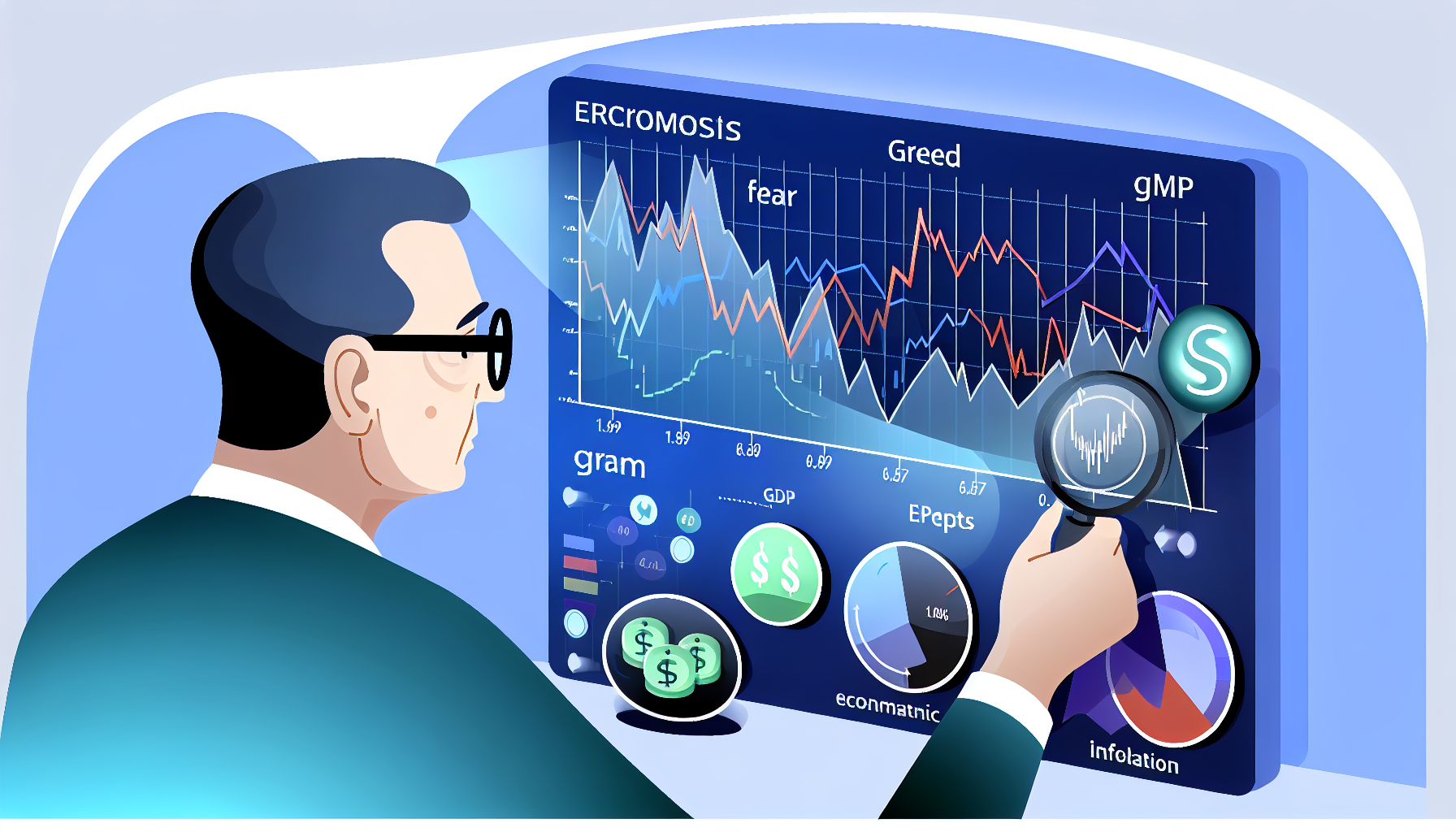
#StockMarket #FearAndGreedIndex #InvestmentStrategies
Navigating the Emotional Tides of the Stock Market: A Daily Analysis
As a stock market expert with over 30 years of experience, I have witnessed my fair share of market volatility, driven by the dual forces of fear and greed. Today was no exception, as investors grappled with a mix of economic indicators, global events, and market sentiment.
The Fear and Greed Index: A Barometer of Market Sentiment
To understand the mood of the market, we often turn to the Fear and Greed Index, a tool developed by CNN Business. This index quantifies investor sentiment on a scale of 0 to 100, where 0 represents extreme fear and 100 signifies extreme greed. It is calculated using seven key indicators: stock price momentum, stock price strength, stock price breadth, put and call options, market volatility, safe-haven demand, and junk bond demand[1][3][5].
Today's Market Performance
Today, the Fear and Greed Index hovered around 60, indicating a moderate level of greed. Here’s a breakdown of what drove this sentiment:
Stock Price Momentum
The S&P 500 Index ($SPX) performed relatively well compared to its 125-day moving average, contributing to a positive momentum indicator. This suggests that investors are still optimistic about the market's short-term prospects[5].
Stock Price Strength
The number of stocks hitting 52-week highs on the New York Stock Exchange (NYSE) outpaced those hitting 52-week lows, indicating a strong market. This strength is a clear sign that investors are willing to take on more risk, pushing the index towards greed[5].
Stock Price Breadth
Trading volume in advancing stocks exceeded that in declining stocks, further reinforcing the positive sentiment. When more stocks are advancing than declining, it typically signals a healthy market environment[5].
Put and Call Options
The put/call ratio, which compares the trading volume of bearish put options to bullish call options, was lower than usual. This indicates that investors are more inclined towards call options, reflecting a bullish outlook[5].
Market Volatility
The CBOE Volatility Index (VIX) remained relatively stable, suggesting that investor anxiety is not at alarming levels. A stable VIX often corresponds to a more confident market[5].
Safe-Haven Demand
The performance of stocks relative to bonds showed that investors are not seeking safe-haven assets aggressively. This lack of flight to safety indicates that fear is not dominating investor decisions[5].
Junk Bond Demand
Demand for junk bonds, which are riskier than investment-grade bonds, was robust. High demand for junk bonds signifies that investors are willing to take on more risk in pursuit of higher returns, a characteristic of a greedy market[5].
Economic Indicators and Global Events
Economic indicators played a significant role in shaping today's market sentiment. Positive GDP growth and employment rates contributed to an optimistic outlook, while inflation concerns were somewhat mitigated by stable consumer confidence data. These factors collectively pushed the Fear and Greed Index towards the greed side of the spectrum[5].
Global political events also influenced investor sentiment. News of easing geopolitical tensions and progress in trade negotiations added to the market's optimism. In times of stability, investors tend to be more greedy, seeking higher returns and taking on more risk[5].
Sector Performance
Several sectors performed notably well today, driven by the overall positive market sentiment.
Technology Sector
The technology sector, led by giants like Apple ($AAPL) and Microsoft ($MSFT), saw significant gains. These companies continue to drive innovation and growth, attracting investor interest and pushing their stock prices higher.
Healthcare Sector
Healthcare stocks, including Johnson & Johnson ($JNJ) and Pfizer ($PFE), also performed well. Positive clinical trial results and strong earnings reports from key players in this sector boosted investor confidence.
Financial Sector
The financial sector, with stocks like JPMorgan Chase ($JPM) and Goldman Sachs ($GS), showed resilience. Strong banking results and a stable interest rate environment supported the sector's performance.
Market Timing and Investment Strategies
For investors, understanding the Fear and Greed Index is crucial for making informed decisions. Here are a few strategies to consider:
Contrarian Approach
When the Fear and Greed Index indicates extreme fear, it might be a good time to buy. Conversely, when it shows extreme greed, it could be a signal to sell. This contrarian approach can help investors capitalize on market extremes[3].
Risk Management
Using the Fear and Greed Index to gauge market sentiment can help in managing risk. During periods of high greed, it may be wise to rebalance portfolios to avoid overexposure to risky assets. In times of fear, diversifying into safer assets can mitigate potential losses[3].
Portfolio Rebalancing
The index can also guide portfolio rebalancing. When the market is greedy, it might be a good time to take some profits and rebalance the portfolio. During fearful times, it could be an opportunity to add undervalued stocks[3].
Conclusion
Today's market activity was characterized by a moderate level of greed, driven by positive economic indicators, strong sector performance, and stable global events. The Fear and Greed Index provided valuable insights into investor sentiment, highlighting the importance of emotional and psychological factors in investment decisions.
As we navigate the complex and often emotional world of the stock market, tools like the Fear and Greed Index are indispensable. They offer a window into the collective psyche of investors, helping us make more informed and timely investment decisions.
In the ever-changing landscape of the stock market, staying informed and adaptable is key. By understanding the interplay between fear, greed, and market indicators, investors can better position themselves for success in this dynamic and sometimes unpredictable environment.









Leave a Reply